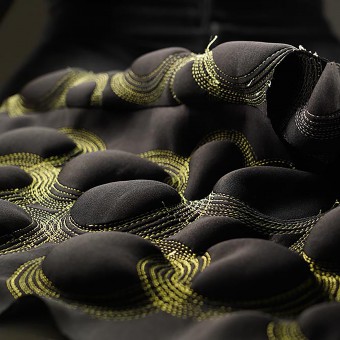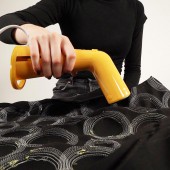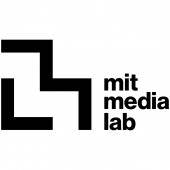Random Puff 4D Embroidered Garment by Rosalie Hsin-Ju Lin |
Home > Winners > #145286 |
 |
|
||||
| DESIGN DETAILS | |||||
| DESIGN NAME: Random Puff PRIMARY FUNCTION: 4D Embroidered Garment INSPIRATION: Working at a NIKE shoe industry, I realized the challenge of transformation between 3D to 2D or vice versa. There's still no clear solution for the tedious, laborious, wasteful process from prototyping to production. Working as a R&D at a carbon fiber company, I got to witness the power of machine embroidery, where it can digitally place fibers. This way, it can reinforce the artifact in any direction, replace the lamination thus reducing the material waste, and digitalize the process from start to end. UNIQUE PROPERTIES / PROJECT DESCRIPTION: Random Puff is a garment application leveraging the puffy transformation that traps air within the dome pocket to keep the body warm. The double curvature geometry becomes easily fabricated, and personalizable styling is available through the computational design process, which opens up a new design/manufacturing space for a puffy garment. OPERATION / FLOW / INTERACTION: First, a closed-curve set of circles, squares, or other arbitrary shapes is generated within the area of a 2D clothing. Second, the design file will be translated to an embroidery file via Processing, a visual output, and procedural coding environment. Third, upload the file to a desktop hobbyist embroidery machine and start embroidery. Lastly, the garment comes out flat from the machine and users can customize where to activate the puffs by heating the embroidery pattern with a steamer or iron. PROJECT DURATION AND LOCATION: The project started in September 2021 and finished in December 2021 in Cambridge, MA, United States. |
PRODUCTION / REALIZATION TECHNOLOGY: Heat-shrink thread. Neoprene. Machine embroidery. Processing visualizer. SPECIFICATIONS / TECHNICAL PROPERTIES: 500mm x 30mm x 700mm. However, since it's a garment, it can be fold into the size of 300mm x 20mm x 200mm. TAGS: 4D embroidery RESEARCH ABSTRACT: Research background: This research demonstrates how machine embroidery with heat-shrinking fibers enables existing fabrics to be augmented with morphing fibers. Methods/Tools: Similar to sewing, embroidery is a technique of interlacing upper and bottom threads with the substrate in between, but digitally. For the hardware, a desktop, hobbyist embroidery machine can easily execute wanted samples. For the software, I mainly explored PEmbroidery and Inkstitch for different purposes. PEmbroider is an open-source library housed in Processing that offers a procedural coding environment to generate detailed embroidered files at point and line levels. Inkstitch is also an open-source plug-in embedded in Inkscape that provides a graphical user interface, which is more friendly for primary users. Results/Insight: I started off the material characterization by testing different substrates with the same embroidery parameters. Out of 10+ fabrics, fabrics that are lightweight with high springness can hold the morphed structure better. A series of embroidery parameters were also tested systematically with stroke width, density, peak-to-peak distance, stitch spacing, and threading material. The fiber actuator can be tuned from crease(low res) to bend(high res) in a linear pattern. The fiber can be arranged in curves, origami creases, or arbitrary shapes to form more complex pop-up geometry. CHALLENGE: First, the force balance between active thread and static fabric is a fundamental challenge. There is too much fabric out there with labeled information that does not necessarily lead to our purpose. Second, tension issues happen when new threads or fabric are introduced to the machine. It takes a while to calibrate, and sometimes break the machine if the thread is too thick/thin, or the fabric is too thick/slippery/crisp ADDED DATE: 2022-09-29 06:15:10 TEAM MEMBERS (4) : Rosalie Hsin-Ju Lin, Skylar Tibbits, Jack Forman and Hiroshi Ishii IMAGE CREDITS: All IP, copyright, images, video credits belong to Rosalie Hsin-Ju Lin. |
||||
| Visit the following page to learn more: https://www.instagram.com/rosalie.h.j.l/ | |||||
| AWARD DETAILS | |
 |
Random Puff 4d Embroidered Garment by Rosalie Hsin-Ju Lin is Winner in Textile, Fabric, Textures, Patterns and Cloth Design Category, 2022 - 2023.· Read the interview with designer Rosalie Hsin-Ju Lin for design Random Puff here.· Press Members: Login or Register to request an exclusive interview with Rosalie Hsin-Ju Lin. · Click here to register inorder to view the profile and other works by Rosalie Hsin-Ju Lin. |
| SOCIAL |
| + Add to Likes / Favorites | Send to My Email | Comment | Testimonials | View Press-Release | Press Kit | Translations |
Did you like Rosalie Hsin-Ju Lin's Textile Design?
You will most likely enjoy other award winning textile design as well.
Click here to view more Award Winning Textile Design.








